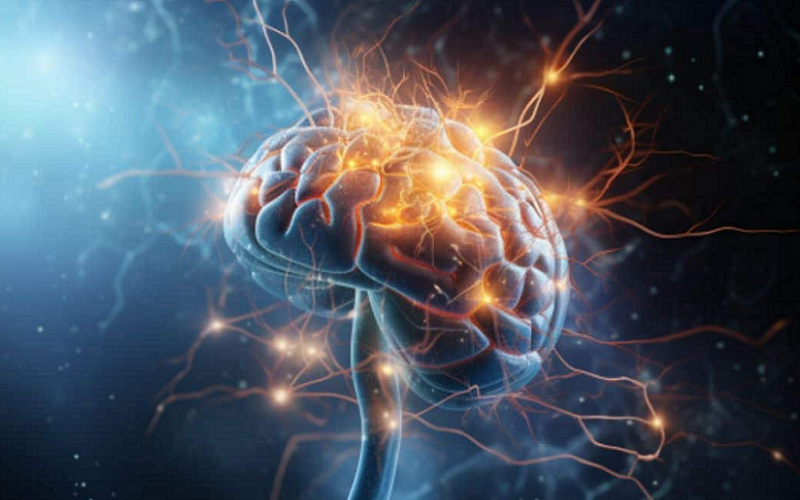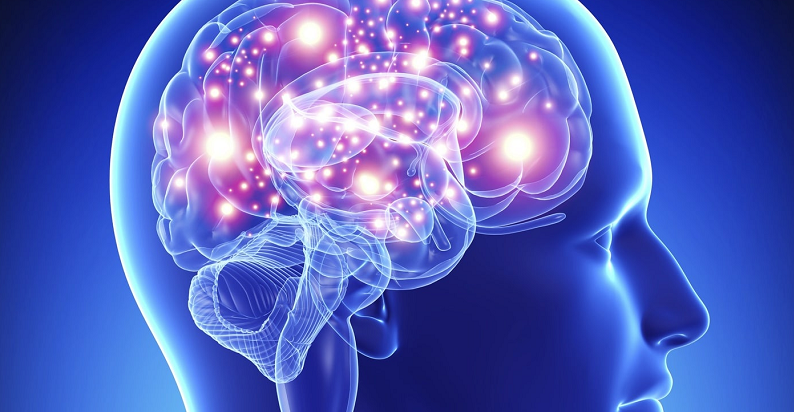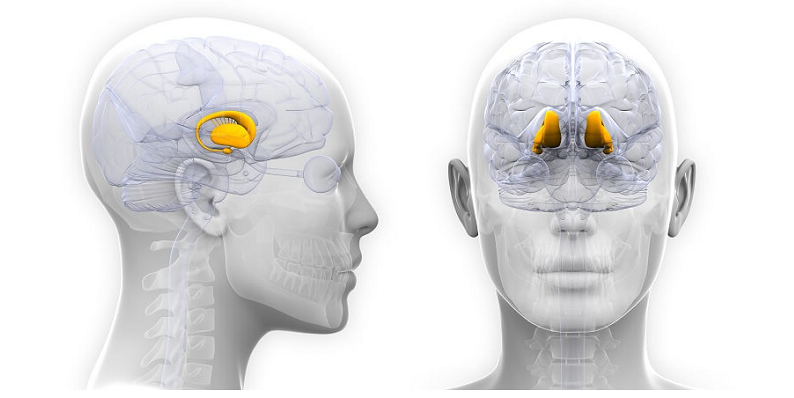
Nestled deep within the cerebral cortex, the thalamus plays a pivotal role in our cognitive functions and overall brain health. This small but mighty structure acts as a relay station, meticulously processing and directing sensory information to various parts of the brain. Here we uncover the anatomical structure of the thalamus, revealing its intricate connectivity with other brain regions, and we examine its multifaceted functions, from its critical role in relaying sensory information and motor control to its influence on our sleep-wake cycles and cognitive abilities.
Contents
Anatomical Structure of the Thalamus
The thalamus is a remarkable structure with a complex anatomy that is integral to its diverse functions in the brain. Understanding its physical structure, location, and connectivity is essential to appreciate how it influences various cognitive processes and neurological functions.
Location of the Thalamus in the Brain
The thalamus is centrally located deep within the brain, lying just above the brainstem and nestled between the cerebral cortex. It forms part of the diencephalon, which also includes structures like the hypothalamus and epithalamus. This central position makes the thalamus a critical hub for transmitting and processing information from various parts of the nervous system.
Physical Structure and Components of the Thalamus
Physically, the thalamus is a bilateral structure, meaning it has two halves – one in each cerebral hemisphere. These halves are oval-shaped and approximately the size of a walnut. The two parts of the thalamus are connected by a bridge-like structure known as the massa intermedia or interthalamic adhesion, which passes through the third ventricle of the brain.
The thalamus is made up of several smaller nuclei, each responsible for relaying different types of sensory information. These nuclei are grouped into larger categories based on their functions: the anterior group, medial group, lateral group, and intralaminar and midline nuclei. Each nucleus has its specialized role, from processing visual and auditory data to contributing to motor control and emotional regulation.
Connectivity of the Thalamus with Other Brain Regions
The thalamus has extensive connections with various regions of the brain, making it a central hub for communication. Its primary function is to relay sensory information from the body to the appropriate cortical areas for processing. For example, the lateral geniculate nucleus processes visual information received from the retina and sends it to the visual cortex.
In addition to sensory data, the thalamus also plays a crucial role in motor control. It receives information from the cerebellum and basal ganglia, then transmits it to the motor cortex. This connection is essential for coordinating voluntary movements.
Moreover, the thalamus has bidirectional connections with the cerebral cortex, allowing it not only to send information to the cortex but also to receive feedback. This two-way communication is vital for many cognitive functions, including attention, memory, and consciousness [1].

Functions of the Thalamus
The thalamus, while small in size, plays an immense role in various brain functions. Its strategic location and intricate structure allow it to participate in multiple key processes, ranging from sensory perception to cognitive functions.
Thalamus Acts as Relay Station for Sensory Information
One of the most critical functions of the thalamus is acting as a relay station for sensory information. Except for the sense of smell, all sensory inputs, including vision, hearing, taste, and touch, pass through the thalamus before reaching the appropriate areas of the cerebral cortex.
For instance, the lateral geniculate nucleus of the thalamus processes visual information, while the medial geniculate nucleus is involved in auditory processing. This relay function ensures that sensory data is effectively and efficiently processed, playing a vital role in our perception of the world [2].
Thalamus Role in Motor Control
Beyond sensory information, the thalamus is also integral to motor control. It receives signals from the cerebellum and basal ganglia, which are central areas for coordinating movement. The thalamus then relays these signals to the motor cortex, aiding in the execution of voluntary movements. This connection is crucial for smooth, coordinated muscle activity and overall motor function.
Contribution of the Thalamus to Sleep and Wakefulness
The thalamus also significantly influences sleep and wakefulness. It acts as a gatekeeper of sensory information during sleep, filtering out unnecessary stimuli to maintain the state of rest. Additionally, certain nuclei within the thalamus are involved in the generation of sleep rhythms and the transition between different stages of sleep, highlighting its role in maintaining healthy sleep patterns.
Involvement of the Thalamus in Cognitive Functions
Finally, the thalamus has a substantial impact on various cognitive functions. Its two-way communication with the cerebral cortex is essential for attention, memory, and consciousness. The thalamus helps in focusing attention on relevant stimuli and plays a role in the encoding and retrieval of memories. It is also involved in consciousness, with its activity levels correlating with different states of awareness.
The Thalamus and Neurological Disorders
The thalamus, integral to numerous brain functions, can be implicated in various neurological disorders when its normal functioning is disrupted. Understanding the role of the thalamus in these conditions not only sheds light on their nature but also opens avenues for potential treatments.
Thalamic Stroke: Causes and Effects
A thalamic stroke, resulting from a disruption of blood supply to the thalamus, is one such disorder. It can lead to a range of symptoms depending on the affected thalamic region. Common consequences include sensory deficits, such as numbness or pain, and motor impairments. Additionally, a thalamic stroke can cause cognitive and emotional disturbances, including memory issues, attention deficits, and changes in personality [3].
Impact of the Thalamus on Disorders like Schizophrenia and Epilepsy
The thalamus also plays a role in psychiatric and neurological disorders such as schizophrenia and epilepsy. In schizophrenia, alterations in thalamic connectivity and activity have been observed, which may contribute to sensory processing anomalies and cognitive symptoms characteristic of the disorder. In epilepsy, abnormal thalamic rhythms can trigger seizures, highlighting the thalamus’s involvement in controlling neural excitability and synchronization.
Thalamic Pain Syndrome
Another condition associated with thalamic dysfunction is thalamic pain syndrome, or central pain syndrome. This condition often arises after a thalamic stroke and involves intense, often chronic pain that is challenging to treat. It is thought to result from abnormal processing of pain signals in the damaged thalamus, leading to a distorted perception of pain that can significantly impact quality of life.

Research and Advances in Thalamic Studies
The thalamus has been a subject of intense research, with recent studies shedding new light on its functions and implications in various brain disorders. These advances not only deepen our understanding of the thalamus but also pave the way for innovative treatments.
Recent Discoveries about the Thalamus
Recent research has unveiled more details about the intricate role of the thalamus in cognitive processes. Studies have shown that the thalamus is not just a passive relay station but actively modulates the information it transmits. This has significant implications for understanding how the brain processes sensory information and executes cognitive functions. Furthermore, advanced imaging techniques have revealed more about the thalamic connections with other brain regions, highlighting its role in the brain’s broader network.
Ongoing Research and Future Directions of the Thalamus
Ongoing research is focused on exploring the thalamus’s role in consciousness and its involvement in sleep disorders. Scientists are also investigating the potential of thalamic stimulation as a treatment for various conditions, including epilepsy and mental health disorders. Additionally, there is a growing interest in understanding the thalamus’s development and how early-life disruptions can impact later brain function and vulnerability to disorders [4].
Implications of the Thalamus in Treating Neurological Disorders
The advancements in thalamic research have significant implications for treating neurological disorders. For example, deep brain stimulation targeting the thalamus has shown promise in treating movement disorders like Parkinson’s disease. There is also potential for developing new therapies for thalamic stroke rehabilitation and managing thalamic pain syndrome. Understanding the thalamus’s role in psychiatric disorders could lead to more effective treatments for conditions like schizophrenia.
Practical Implications of Understanding the Thalamus
The understanding of the thalamus has important practical implications for everyday brain and cognitive health. By applying this knowledge, individuals can adopt strategies to support thalamic health and, consequently, overall brain function.
How Understanding the Thalamus Can Improve Brain Health
Gaining insight into the thalamus’s functions can help in recognizing the signs of thalamic-related disorders early and seeking timely intervention. For example, understanding the thalamus’s role in sensory processing and motor control can aid in identifying symptoms of thalamic stroke or other neurological conditions. This knowledge also underscores the importance of protecting the brain from injuries and maintaining good cardiovascular health to ensure adequate blood flow to the thalamus [5].
Strategies to Support Thalamic Health
Maintaining overall brain health can indirectly benefit the thalamus. This includes regular physical exercise, which enhances blood flow to the brain, and mental exercises to keep the neural connections active and healthy. A balanced diet rich in omega-3 fatty acids, antioxidants, and vitamins can also support brain health. Moreover, managing stress and ensuring adequate sleep are crucial, as they directly impact the thalamus’s functions in stress response and sleep regulation.
Lifestyle and Environmental Factors
Lifestyle and environmental factors play a significant role in maintaining thalamic and brain health. Avoiding substances that can harm the brain, such as excessive alcohol and drugs, is essential. Creating a stimulating environment that challenges the brain through learning new skills, social interaction, and engaging in creative activities can also support cognitive functions, indirectly benefiting the thalamus.
References
[1] Thalamus: What It Is, Function & Disorders
[2] The Role of the Thalamus in Modulating Pain
[3] What does the Thalamus do?
[4] Thalamus Anatomy, Function, & Disorders
[5] Exploring the Thalamus and Its Role in Cortical Function

